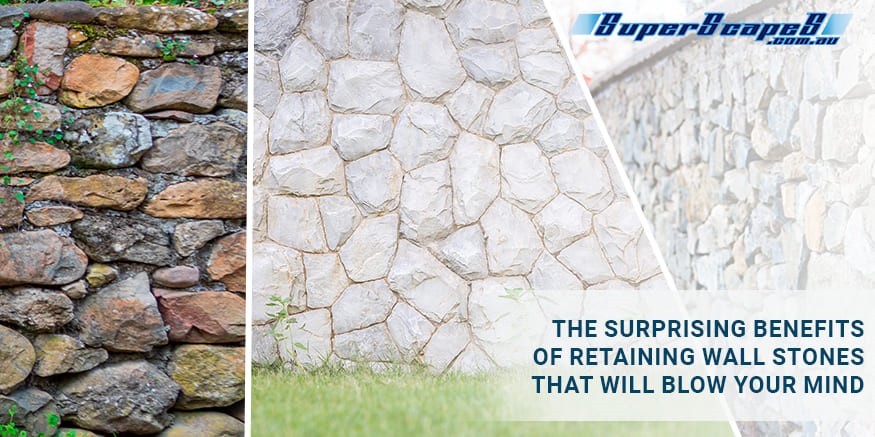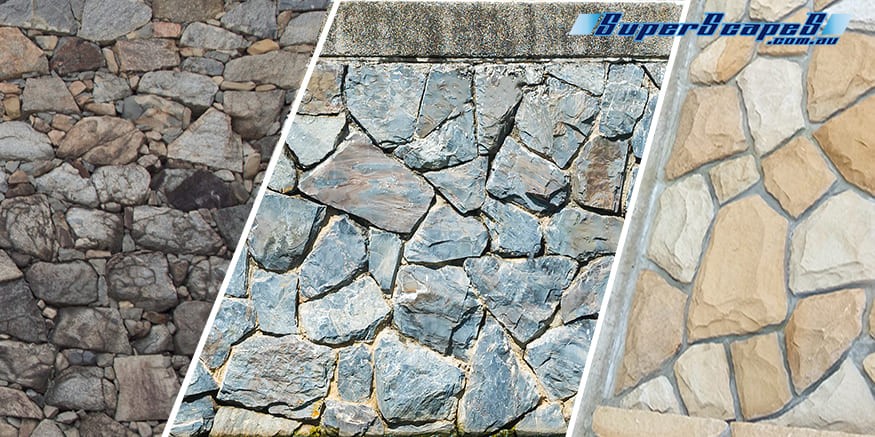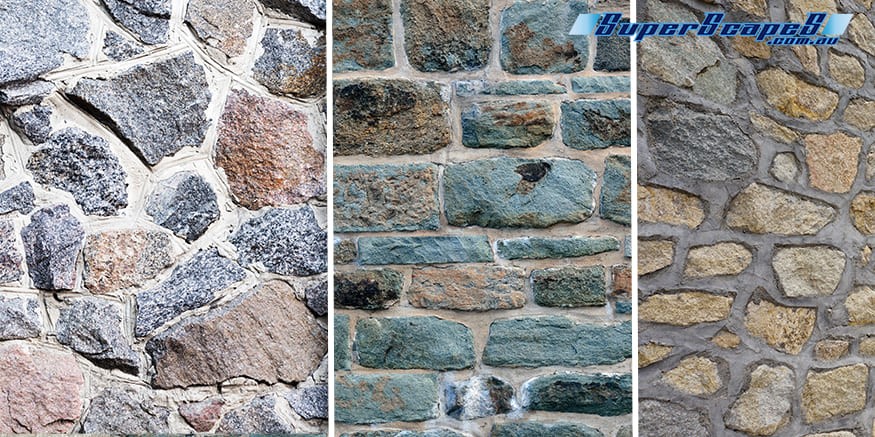
A type of landscaping material, retaining wall stones, is used to retain soil and prevent erosion from sloping areas. They can be made from natural materials like stone, brick, or concrete and are available in many sizes and shapes.
The attractive and effective solution to many landscaping problems is retaining wall stones. They can create flat surfaces in sloped areas or prevent soil erosion.
This blog will explore some of the surprising benefits of retaining wall stones, which you might not know. This blog is for homeowners looking to improve their outdoor spaces’ functionality and beauty and landscapers looking for new ideas and insights on using best-retaining wall stones.
Retaining wall stones have many benefits, not just for their erosion control and water management but also for curb appeal and property value. This blog will help you understand why retaining wall stones are popular as landscaping material and how to use them to transform your outdoor spaces.
Benefits of using retaining wall stones
There are many benefits to retaining wall stones that can enhance your outdoor space’s functionality and beauty. We will discuss the important benefits of retaining wall stone.
A. Erosion Control
Properties with sloped landscapes are more susceptible to erosion. The force of wind and water can cause soil erosion over time. This can result in uneven surfaces, soil instability, and damage to nearby structures. By holding the soil in place, and redirecting water flow, retaining wall stones can help to prevent erosion.
Retaining wall stones can withstand nature’s forces, one of their key strengths. Unlike other landscaping materials like wood and plastic, retaining wall stones are durable and strong. This makes them great for soil erosion prevention on slopes. You can also choose from various sizes and shapes to make retaining walls that meet your needs.
Retaining wall stones are not only effective in preventing soil erosion but also reduces water runoff. You can reduce flooding and water damage by redirecting water flow away from your property. This is especially beneficial for flood-prone homes or those located near water bodies.
B. Preventing Damage to Structures
Retaining wall stones can help prevent damage to structures such as fences, buildings, or decks. Structures can shift or collapse if the soil is allowed to erode on sloped properties. This is especially dangerous in areas that receive heavy rainfall or high winds.
By providing a stable foundation for structures to rest upon, retaining wall stones can help reduce this damage. Retaining wall stones help to ensure structures are secure and stable in all weather conditions by holding the soil in place.
Retaining wall stones can also create flat areas or terraces on sloping properties, ideal for outdoor living spaces and gardens. Creating a level surface can make your outdoor space more useful and enjoyable.
C. Water Management
Retaining wall stones can effectively manage water. Retaining walls is an effective way to prevent water runoff from damaging your property or providing drainage in areas more susceptible to flooding. The stones act as a barrier to slow down the flow of water and allow it to absorb into the soil slowly.
This is especially important for areas with heavy rains or flooding. Without retaining walls, water can build up around your foundation and cause damage over time. Installing retaining wall stones will protect your home from the harmful effects of water.
D. Increased property value
Your property can also be enhanced by retaining wall stones. A well-designed and installed retaining wall will enhance your outdoor space’s aesthetic appeal, making it more appealing to potential buyers. You can also create additional space in previously unutilized areas, like sloping areas.
Retaining walls can also improve your property’s safety by stabilizing slopes and preventing soil erosion. This is especially important for areas susceptible to landslides and other natural disasters.
E. Aesthetics and Curb Appeal
There are many options for retaining wall stones. You can create an attractive and unique outdoor space with various sizes and shapes. There are retaining stone options for every style, so you can create a unique outdoor space that will complement your taste and improve the aesthetics of your property.
Using different textures and patterns, you can create visual interest in your outdoor space with retaining walls. You can make your property stand out by using different types and textures of stone.
Retaining walls can also create clear boundaries between different areas on your property. This is especially useful for large properties with many outdoor spaces. You can transform your outdoor space with retaining wall stones. Retaining walls can be a valuable addition to any property.
They are versatile and useful, and they can help you manage water efficiently and increase your property’s value. Retaining wall stones are an excellent landscaping option for homeowners who want to improve the aesthetics and functionality of their outdoor spaces.
Optional Retaining Wall Stones
There are many options for retaining wall stones. They come in different styles and types, so finding the right stones for your landscaping project is easy. There are many choices, from concrete to natural stone, to choosing the right one for you. This section will discuss the various types of stone, how to select the right stone for your project, and the cost comparison.
A. Different types of stones

1. Natural Stone
Natural stone is a popular choice for enclosing retaining walls because of its strength and beauty. Natural stones such as sandstone and granite are some of the most popular. Each stone has unique color and texture that can give your outdoor space a special touch.
2. Concrete Block
Concrete block is a strong and affordable choice for retaining walls. Concrete block is simple to install and available in many sizes and shapes. This makes it possible to make a unique design. Concrete block retaining walls are also available in various colors that can be stained or painted to match your home and other landscaping elements.
3. Brick
Brick retaining walls are popular for their classic appearance and appeal to residential properties. Brick retaining walls are strong and easily arranged in many different patterns and colors. You can also use brick retaining walls for outdoor fireplaces or seating areas.
B. Choosing the Right Stones for Your Project
You should consider many factors when choosing retaining wall stones for your project. These include the soil type, height, and overall design. You should also consider how the stones will be mounted and their weight.
For example, you might need to use heavier stones to stop soil erosion if you have clay soil. You may also need tall retaining walls if your property has clay soil. It is important to consider the texture and color of the stones you select.
You can choose from various natural stone colors and textures to complement your property’s look. Concrete and brick can also be painted or stained to match landscaping elements.
C. Cost Comparison
Prices for retaining wall stones vary depending on what type you choose. Concrete block and brick are typically more affordable than natural stone. It is important to compare costs not only for the stones but also for the installation. Installing stone retaining walls can be challenging and require professional landscaping services. DIYers can install concrete blocks and brick.
The cost of retaining walls will vary based on their height and length, the type of stones used, and the cost to install them. To determine which stone option is best for you, you must weigh the costs and benefits of each type of stone.
Choosing the right type of stones for your retaining wall project is crucial. This will ensure that it lasts, strengthens, and adds beauty to your outdoor space. You can make a functional and beautiful retaining wall that will increase the property’s value and enjoyment by considering the various types of stones and comparing the costs.
Installation Process
Although a retaining wall installation can seem daunting, you can do it easily with the right tools. This section will cover the installation process, from preparation to finishing touches.
A. Preparation
It is important to prepare the area before you start the installation properly. Measure the area you wish to place the retaining walls, then mark it with string and stakes.
B. Building the Retaining Wall
After you have prepared the site for construction, you can start building the retaining walls. Lay the first row of stones in the trench. Make certain that they are level and spaced equally. Adjust the stones with a level or a rubber mallet if necessary.
Apply an adhesive layer on the back of each stone and press it into place. To create a secure and stable wall, add more stones in a staggered fashion. Make sure the wall is straight and level when you are building it. This will ensure stability and stability over time.
C. Adding finishing touches
After you have completed the main structure, you can add finishing touches that will enhance the wall’s beauty and functionality. Capstones can be added to the top of the wall to help prevent water from getting into the structure and causing damage.
To enhance the wall’s aesthetic appeal and increase visibility at night, you might also consider lighting it. LED strip lights can also be placed along the wall’s top to create a warm, inviting atmosphere.
Maintenance and Care

Although retaining walls can be a great addition to any landscaping project, they need to be maintained and looked after properly to ensure their functionality and longevity. We will discuss some of the most common mistakes and tips for cleaning a retaining wall.
A. Cleaning Tips
Over time, retaining walls can accumulate dirt, debris, and other stains that can ruin their beauty and function. Regular cleaning of your retaining walls can prevent them from getting damaged and extend their life expectancy.
Start by cleaning your retaining walls with a brush or broom. Next, clean the retaining wall with a broom or brush. Then use a pressure washer to remove any dirt and stains. To remove stubborn stains, you can use mild detergent and a scrub brush.
Avoid using harsh chemicals and abrasives as they can cause damage to the stones’ surfaces and compromise the integrity of the wall.
B. Inspections and Repairs
Frequent inspections can spot possible issues before they develop into larger ones. Your retaining wall should be inspected at least once per year and after major weather events or seismic activity.
You should look for signs of damage, such as bulges or cracks. These could be signs of soil erosion, water damage, or poor installation. You should immediately address any signs of damage to avoid further injury and safety hazards.
You may need to repair the wall by adding concrete or stone, replacing broken stones, or correcting drainage problems that could be causing soil erosion.
C. Common Mistakes to Avoid
When installing retaining walls, homeowners often overlook drainage. Drainage is essential for retaining walls to keep water from accumulating behind them, which could lead to soil erosion or damage.
A common error is to use the wrong kind of stones or materials. Homeowners may use stones that need to be stronger to support the soil’s weight or properly install drainage material. Before you start your project, consult with a professional landscaper. They will be able to provide advice on the best materials for your needs and how to install them.
It is important to maintain and care for your retaining walls in order to preserve their functionality and longevity. Regular cleaning, inspections, repairs, and maintenance can prevent damage and extend its life expectancy. You can make a functional and beautiful retaining wall that will increase the property’s value for many years by avoiding common mistakes.
Conclusion:
Retaining wall stones has many benefits that will enhance the value, beauty, and functionality of your property. These stones can transform your outdoor space in unexpected ways, from water management to increased property values and curb appeal. For your next outdoor project, retaining wall stones are worth looking into, whether you’re doing it yourself or working with professionals.
